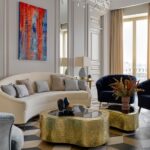If you see a large “sand” anthill (ant nest) in your lawn or garden and black or black and red ants coming in and out, this is the work of wood ants ( Formica spp. ) or other related ants. They are significantly larger than brown field ants ( Lasius spp., especially L. neoniger ), which are small ants that produce many small nests in lawns and patios, and smaller than carpenter ants or spoiler ants. wood ( Camponotus spp.), which do not have very visible nests, as they nest in wood (trunks and stumps, barns, houses, etc.). (By the way, carpenter ants are rarely seen in a garden, as they are essentially nocturnal.)
Wood ants can be all black or black and red
There are many species of wood ants found throughout the Northern Hemisphere. In North America, if all-black ants are encountered, it may include, among others, F. glacialis , while in Europe the most common black ant is F. niger . The red wood ant or simply red ant ( F. rufa and others) is found on both continents. It is two-tone: the head and abdomen are black or dark red, the thorax is brick red.
A very big nest
It is true that when wood ants settle in a lawn, their large nests of spoil (they can measure up to 1 m in diameter!), with several entrances and exits, harm the growth of the lawn and other plants in the area, leaving an area almost empty of vegetation. In addition, the colony can live 7 to 10 years! How then to control them?
A difficult control
The key to success in controlling all ants is to eliminate the queen. It is useless to kill the workers: the queen will only produce more. What complicates the control of wood ants is that they are often polygynous… they can have several queens per colony. Thus, it is necessary to eliminate all the queens to eliminate the nest.
It is for this reason that insecticides commonly used to kill other insects (diatomaceous earth, insecticidal soap, pyrethrum, etc.) will not be effective against wood ants. To think of success, you need a slow-acting insecticide that the workers bring into the nest to feed the queens. Thus they will be intoxicated little and little… and when there are no more queens, the colony will cease to exist.
Sometimes they can be eliminated with commercial ant traps. They contain bait precisely designed to slowly poison the queens. They are placed on the ground, near the nests. You still have to give them time to act: at least 3 weeks
Lay the can lying down near where the ants come out. Boron (natural mineral that borax is made of) is a mildly toxic and so the solution will be too. The workers, attracted by the sugar, will bring the solution to the queens. By being fed boron day after day, they will eventually poison themselves and die. And without a queen, the colony will be abandoned. But be patient! It may take up to 3 weeks to see results.
Or let the ants live!
Personally, I’m not infatuated enough with my lawn to deal with the ants that take up residence there. A small section of 30 cm of grass a little less provided, it does not prevent me from living. When I pass the mower, I scratch the top of their nest a little, but they do it again after my passage. Live and let live is my motto.










Leave a Reply
You must be logged in to post a comment.